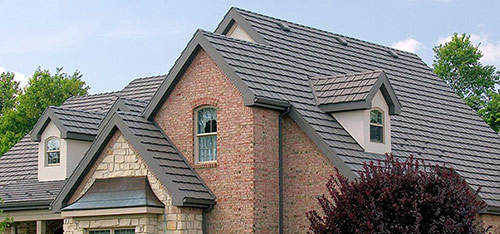When you hear the words “metal roofing” your imagination may immediately conjure up images of old-fashioned tin roofs, rustic and ridged. However, there have been major advances in the design and construction, thereby making these roofs more elegant, durable, and an increasingly popular choice among homeowners. In fact, there are now several options available to customers depending upon the look you want. Often consisting of recycled metals—such as copper, tin, aluminum, and stainless steel— these surfaces can even be designed to imitate traditional shingles, while still offering a sleek, modern twist.

Durability
Metal roofs are known for their toughness. In fact most of the time they come with a 30-50 year warranty and typically survive through the duration of any housing structure. Plus, they’re extremely light-weight compared to conventional shingles, which makes for quick installation. This allows them to be laid over any pre-existing surface and removes the need for wasteful, time-consuming demolition. Here are some other resilient benefits of metal roofing:
Resistance: Due to their sturdy composition, they can withstand any kind of weather. Whether it is hurricane winds, pesky insects, or heavy precipitation, they can endure any climate. Plus, they’re rot-proof and rust-resistant (if properly galvanized).
Fireproof: They are non-combustible, which could save you some money on your insurance premiums (unless they are laid over pre-existing flammable materials, such as wood shingles). And no, they are no more susceptible to lighting (lighting strikes at any high point no matter the material, but if this includes your home, you may want to think about investing in a lighting rod).
Watertight: They’re perfect for sealing out any water. And due to their slick surfacing, snow buildup can slide off quick and easy.
Energy Efficient: They reflect light during the summer, saving money on utility bills. And though insulation is not extensively used in metal roofs, there ought to be a gap between exterior surfaces and the roofing structure. During the winter, this gap provides ventilation and interior thermal reflectivity to help deflect heat back to your house.













